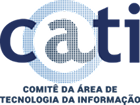Research Group
The primary objective of this research group is the synergistic application of advanced Artificial Intelligence (AI) techniques and the development of sophisticated embedded systems, aiming to address and solve challenges relevant to the industrial sector.
The adoption of AI facilitates the design of advanced computer vision systems, capable of tracking objects and recognizing significant events in video streams. In addition, this group is dedicated to the development and implementation of natural language processing (NLP) algorithms, used to extract and interpret valuable information contained in text and/or speech, and to predict future events based on temporal data analysis.
Embedded systems, whether those made available by the industry itself or developed internally by the institution, play a crucial role in the acquisition and analysis of data collected through sensors. This data collection and processing are essential for the formulation of insights that support strategic decisions, culminating in the implementation of actions through actuators in the physical environment. These interventions are designed to modify production processes in real time, aiming to mitigate events that may result in the production of defective items, thus enhancing the efficiency and optimization of production processes.
In short, the mission of this group is to develop innovative technological solutions that address and overcome the challenges faced by contemporary industry. The aim is to offer significant contributions that not only solve specific problems, but also promote a lasting positive impact on industrial production standards, resulting in tangible benefits for partner institutions and for the field of engineering as a whole.
Meet Our Team
Team
Infrastructure
Vertex – Institute of Science and Innovation offers a robust and constantly improving infrastructure, carefully planned to meet the needs of research groups working on the development of technological solutions in partnership with the productive sector. With spaces dedicated exclusively to research, development and innovation (RD&I), the institute provides an environment conducive to experimentation, creativity and collaborative work.
At the heart of technical and scientific activities is the Vertex laboratory, located at the Jaraguá Innovation Center, in Maceió. With well-distributed workstations and a layout designed to encourage interaction between researchers, this space meets the operational demands of projects, functioning as a center for testing, development and validation of applied technologies.
Research groups also have access to shared meeting rooms at the Innovation Center itself, an environment that favors integration with companies, clients and partner institutions. These strategic spaces complement the work structure and are widely used for alignment meetings, presentations of results and the articulation of new collaborations.
In addition, the Institute has its own headquarters in the Pintanguinha neighborhood, which consolidates Vertex’s institutional identity and expands the possibilities for research groups to work. The building houses technical and administrative environments, common areas, and an additional laboratory that strengthens the installed capacity for project development. With ongoing expansion and improvement initiatives, the headquarters is prepared to support the growth of activities and strategic partnerships.
Projects
Vertex’s technical team has a history of working on innovation and development projects with partners from various production sectors. Below are some examples that have resulted in innovative and scientific publications.
Petrobras
Through a partnership with the EDGE Innovation Center, this research group has been working on developing solutions in Artificial Intelligence and Digital Transformation. More specifically, the main problems addressed refer to support for the process of constructing an oil well and the respective aspects related to costs.
The process of constructing an offshore oil well represents the moment of execution of the various projects previously prepared over months of work. Operationally, a schedule of detailed activities is followed, resulting in uninterrupted operations with several teams working in shifts. Thus, the combination of an industrial environment on the high seas, with high operational costs and limited access to information due to low internet speed, makes the offshore environment an environment of high tension and risk.
The project in question addresses aspects of operational planning at runtime, maximizing the application of best operational practices through the use of Artificial Intelligence in the generation of schedules and operational sequences based on history, implemented in an offshore environment using edge computing technology.
Another relevant aspect addressed in this project is the management of well construction costs. According to the literature, the main factors influencing drilling are the weight on the bit and the rotation of the column to cross the lithological formation, which, in a simplified view, is a complex operation that combines a Well Program with a Drill Program, which, when detailed in the drilling project, determine the cost of the project.
Therefore, the scope of this project includes the development of a cost estimation methodology implemented through a computer tool on a WEB platform, with integrated cost composition data inputs. Thus, the designer will be able to make decisions considering different parameters for each drilling phase and, also, previous times already established in a physical schedule, resulting in a more accurate estimate.
EnerSys Mixer
To produce stationary batteries, several materials are needed, including sulfuric acid. This acid, purchased in concentrated form, needs to be diluted with demineralized water to form the solution that will be used inside the battery. This process, usually manual, is tedious, dangerous and prone to errors, involving the careful mixing of the substances in a special tank and periodic checking of the mixture to ensure the correct density. In addition, there is a significant risk of accidents, such as burns caused by acid splashes.
In order to improve this step, a project was developed to automate the process of mixing the acid and water. The innovation consisted of the use of technologies such as a Programmable Logic Controller (PLC), a conductivity meter, a graphical interface for human interaction (IHMs), several solenoid valves and level sensors. This automated system was designed to carefully control the addition and mixing of the substances, minimizing the risk of accidents and improving the efficiency of the process.
The methodology used, based on Colored Petri Nets, was detailed in a study presented at a scientific conference, highlighting the analysis and validation of the system before its implementation to avoid accidents, financial losses, and human or environmental damage.
The implementation of this automated system brought significant benefits to the company EnerSys, the project partner. The automation, described through advanced modeling, not only made the mixing process safer for workers, eliminating direct exposure to chemical risks, but also accelerated the production of the solution needed to manufacture the batteries. This innovation represents a significant advance in the production of stationary batteries, increasing safety in the workplace and efficiency in the manufacturing process [1].
Corning-Kits
Corning is a world leader in materials science innovation. For over 160 years, it has used its unparalleled expertise in specialty glass, ceramics and optical physics to develop products. Its success is achieved through continuous investment in R&D. In particular, Corning hired members of the Vertex research and innovation team to develop a computer vision and automation system for quality inspection during the kitting process [2]. There were a variety of kits, each consisting of different devices used by the company’s customers to implement optical communications systems. The system inspects whether the kit is assembled correctly and, if so, provides a two-handed actuation system that dispenses the components into a plastic container for subsequent labeling and delivery to customers. The automation solution has contributed significantly to reducing errors in the company’s kitting process, helping to reduce production costs and eliminate rework.
Epson-HSE
One of the frequent concerns of a corporation’s occupational safety department is monitoring the correct use of personal protective equipment (PPE) by its employees. The appropriate use of these devices is of utmost importance to prevent harm to the physical integrity of employees.
In addition, it is important that the PPE used corresponds to those recommended for the sector in which the individual works, so that protection is standardized according to the level of risk of the environment in question. Verification of the correct use of PPE was carried out manually by those responsible for the occupational safety area, who made unscheduled visits to the factory sectors to observe those who wore the appropriate clothing for the sector.
However, this verification was sporadic and susceptible to errors, since employees could put on the PPE when they saw the inspector entering the environment. In this context, Epson Brazil required a solution for automated inspection of PPE by employees, using videos from security cameras installed in the factory. This inspection was carried out with deep neural network models in a continuous manner, achieving results published at an international conference [3].
Jabil-ML
Jabil is a global leader in electronics manufacturing solutions, providing design, manufacturing, and supply chain services to a variety of industries, including information technology, telecommunications, healthcare, and automotive. With a strong presence in more than 30 countries, the company stands out for its ability to innovate and scale quickly, serving companies ranging from startups to large global corporations. Its expertise ranges from product design and prototyping to mass manufacturing and after-sales management, enabling the company to offer complete and customized solutions to meet the specific needs of each client. In addition, the company is known for its strong emphasis on sustainability and efficiency, constantly seeking ways to minimize the environmental impact of its operations and products. The implementation of an automatic visual inspection (IVA) project in the printed circuit board (PCB) assembly process at Jabil has brought benefits, increasing production efficiency and quality, while reducing operating costs. In particular, the IVA system used advanced camera technologies and artificial intelligence software to detect manufacturing defects in real time, which consisted of checking for missing, incorrect, or misplaced components. This not only accelerated the process of identifying and correcting errors, avoiding rework and waste, but also contributed to the continuous improvement of production processes through data collection and analysis.
The project was developed by members of the Vertex team using Siamese deep neural networks and the results were presented at an international conference [4].
Softex (MVPs)
Previsão de geração de energia
The use of recurrent neural networks (RNRs) in the context of forecasting demand for solar photovoltaic energy generation is essential to ensure the efficiency and reliability of electricity supply. This is due to the unique ability of RNRs to process temporal data sequences, allowing them to understand complex patterns of variation in solar generation as a function of weather and consumption conditions over time.
This accurate forecasting capability is essential for the planning and operation of energy systems, allowing network operators to adjust energy production and distribution in order to avoid shortages in meeting consumption demand.
By anticipating fluctuations in solar generation, RNRs contribute significantly to the optimization of the energy mix, reducing dependence on non-renewable sources and promoting a smoother transition to clean and sustainable energy. In particular, a work was developed in which recurrent networks of specific architecture of the Long Short-Term Memory (LSTM) type were applied in the context of forecasting the behavior of demand for electricity consumption in order to prevent shortages in distribution [5]. It is worth noting that the team has access to a mini-solar photovoltaic generation plant to carry out specific studies on the topic in question [6].
The use of recurrent neural networks (RNRs) in the context of forecasting demand for solar photovoltaic energy generation is essential to ensure the efficiency and reliability of electricity supply. This is due to the unique ability of RNRs to process temporal data sequences, allowing them to understand complex patterns of variation in solar generation as a function of weather and consumption conditions over time.
This accurate forecasting capability is essential for the planning and operation of energy systems, allowing network operators to adjust energy production and distribution in order to avoid shortages in meeting consumption demand.
By anticipating fluctuations in solar generation, RNRs contribute significantly to the optimization of the energy mix, reducing dependence on non-renewable sources and promoting a smoother transition to clean and sustainable energy. In particular, a work was developed in which recurrent networks of specific architecture of the Long Short-Term Memory (LSTM) type were applied in the context of forecasting the behavior of demand for electricity consumption in order to prevent shortages in distribution [5]. It is worth noting that the team has access to a mini-solar photovoltaic generation plant to carry out specific studies on the topic in question [6].
Agrover
The use of autonomous robots to perform visual inspection of crops represents a significant advance in the context of precision agriculture. These robots, equipped with vision-based perception modules, as demonstrated in the development of a versatile mobile platform for precision agriculture, have the potential to transform crop management and monitoring.
By applying advanced algorithms, such as SAM for path segmentation and YOLOv5 for corn stalk detection, these robots can autonomously navigate complex agricultural environments, performing detailed and accurate inspections of crops.
This ability to efficiently and accurately detect specific elements in crops, such as plant stalks, allows for a continuous assessment of crop conditions, facilitating more accurate and timely agronomic interventions.
Consequently, it contributes to optimizing the use of resources, improving plant health and increasing productivity, reinforcing the importance of these technologies in promoting more sustainable and effective agricultural practices [7].
Mixed Reality (MR)
The implementation of mixed reality in the context of employee training in industries represents a revolution in the way knowledge is transmitted and skills are developed, especially in activities involving the operation of heavy machinery. This technological advancement, exemplified by [8].
Mixed reality stands out for its ability to superimpose digital information on the real world, creating an interactive and immersive learning environment. By simulating real machinery operation scenarios in a safe environment, this technology allows employees to practice procedures, identify risks and learn how to handle complex equipment without the dangers associated with traditional hands-on training.
This approach not only minimizes the risk of accidents and injuries during training, but also significantly increases knowledge retention, preparing workers more efficiently and effectively. In addition, mixed reality in industrial training makes it easier to understand complex processes and perform specific tasks through step-by-step visual guidance, making learning more accessible and less intimidating for new operators.
With the ability to monitor in real time and provide instant feedback to adapt your techniques to meet the safety and efficiency standards required by Industry 4.0, this technology not only optimizes training time but also personalizes the learning experience to meet the individual needs of operators, promoting a safer and more productive work environment.
By incorporating mixed reality into training programs, manufacturers are not only advancing their operational capabilities, but also demonstrating a commitment to the safety and well-being of their employees.
Misc – Processamento de Imagens em Acustofluídica
Acoustofluidics combines the precise manipulation of microscale fluids with the use of acoustic fields, and has proven to be a revolutionary tool for the study and manipulation of microparticles, including cells and pathogens. Its importance for the diagnosis of diseases, such as leishmaniasis, lies in its ability to selectively separate and concentrate biological microparticles from complex samples, such as blood, with high precision and without damaging the biological components.
This method provides an efficient platform for the rapid and sensitive detection of pathogens, facilitating early identification of the disease and enabling more effective treatment. Furthermore, the non-invasive nature and efficiency of acoustofluidics in manipulating small sample volumes make it a promising technology for point-of-care diagnostic applications, offering a less expensive and more accessible approach for disease monitoring in remote or resource-limited regions, where leishmaniasis is often prevalent [9, 10, 11].
3D Facial Recognition
The use of depth images for facial recognition represents a significant advance in the security and accuracy of biometric identification technologies. Unlike traditional two-dimensional images, which can be easily manipulated or fooled by photos, masks, or other artifacts, depth images capture the unique three-dimensional structure of a person’s face. This makes it possible to differentiate between a real face and a fake, significantly increasing security against fraud attempts or unauthorized access. In addition, by providing data on the shape and contour of the face, depth images allow for more robust recognition in varying lighting conditions and at different viewing angles, improving the effectiveness of facial recognition in challenging environments. This technology has critical applications in areas such as access control, security systems, identity verification in banking services and airports, among others, where accuracy and security are of utmost importance [12].
Publications
[1] L. D. Silva, H. J. Savino, T. F. Vieira, and D. B. Brito, “Modelagem Formal Utilizando Redes de Petri Coloridas de um Sistema de Automação para abastecimento e Diluição de Ácido Sulfúrico,” in 22º Congresso Brasileiro de Automática, João Pessoa, 2018. 4
[2] B. G. Ferreira, “Novo modelo de rede neural para detecção de objetos aplicado `a inspeção industrial,” Master’s thesis, Universidade Federal de Alagoas, 2021. 4
[3] B. Ferreira, B. Lima, and T. Vieira, “Visual inspection of collective protection equipment conditions with mobile deep learning models,” in Proceedings of the 1st International Conference on Deep Learning Theory andApplications. SCITEPRESS – Science and Technology Publications, 2020.5
[4] W. Barbosa., L. Amaral., T. Vieira., B. Georgevich., and G. Melo., “Industrial visual defect inspection of electronic components with siamese neural
network,” in Proceedings of the 18th International Joint Conference on Computer Vision, Imaging and Computer Graphics Theory and Applications – Volume 4: VISAPP,, INSTICC. SciTePress, 2023, pp. 889–896.6
[5] I. G. P. Bastos, G. C. Gomes, Í. B. Q. Araújo, E. d. A. Barboza, T. F. Vieira, and D. B. Brito, “Previsão de Geração Fotovoltaica a Partir de Dados Meteorológicos Utilizando Rede LSTM,” in VIII Congresso Brasileiro de Energia Solar, Fortaleza, 2020. [Online]. Available: https://anaiscbens.emnuvens.com.br/cbens/article/view/761 6
[6] A. M. Oliveira, J. C. P. Filho, G. A. Braga, V. Eduardo M. M., S. Luis F. V., I. Ara¨ujo, and D. B. Brito, “Development and calibration of a low-cost didactic thermal plant,” in 2019 IEEE CHILEAN Conference on Electrical, Electronics Engineering, Information and Communication Technologies (CHILECON), 2019, pp. 1–4. 6
[7] H. Oliveira, A. Vangasse, L. Soares, A. Oliveira, B. Ferreira, G. Leite, Araújo, and D. Brito, “An adaptable mobile robot platform with vision-based perception for precision agriculture,” in 2023 Latin American Robotics Symposium (LARS), 2023 Brazilian Symposium on Robotics (SBR), and 2023 Workshop on Robotics in Education (WRE), 2023, pp. 466–471.7
[8] L. De Maria Calado Machado Soares, P. H. Silva De Almeida, L. G. Pereira Santos, M. S. Freitas Ferreira Cavalcante, T. T. De Araújo Tiburtino Neves, W. De Lima Torres, A. De Medeiros Martins, and B. Queiroz de Araújo, “Hands tech: An ar-based framework for real-time monitoring and its application in 4.0 industry,” in 2023 15th IEEE International Conference on Industry Applications (INDUSCON), 2023, pp. 789–795. 7
[9] L. Massa., T. Vieira., A. Martins., and B. G. Ferreira., “Assessing the performance of autoencoders for particle density estimation in acoustofluidic medium: A visual analysis approach,” in Proceedings of the 19th International Joint Conference on Computer Vision, Imaging and Computer Graphics Theory and Applications – Volume 3: VISAPP, INSTICC. SciTePress, 2024, pp. 436–443. 8
[10] L. Massa., T. Vieira., A. Martins., Ícaro Q. de Araújo., G. Silva., and H. Santos., “Model fitting on noisy images from an acoustofluidic microcavity for particle density measurement,” in Proceedings of the 18th International Joint Conference on Computer Vision, Imaging and Computer Graphics Theory and Applications – Volume 4: VISAPP,, INSTICC. SciTePress, 2023, pp. 254–261. 8
[11] H. D. A. Santos, G. C. Silva, T. F. Vieira, A. E. Silva, B. Q. de Araújo, C. Jacinto, U. Rocha, M. S. Alexandre-Moreira, and G. T. Silva, “Measuring cell density in a acoustofluidic microcavity,” in 2021 IEEE UFFC Latin America Ultrasonics Symposium (LAUS), 2021, pp. 1–4. 8
[12] F. Crispim, T. Vieira, and B. Lima, “Verifying kinship from rgb-d face data,” in Advanced Concepts for Intelligent Vision Systems. Springer International Publishing, 2020, pp. 215–226. 8








